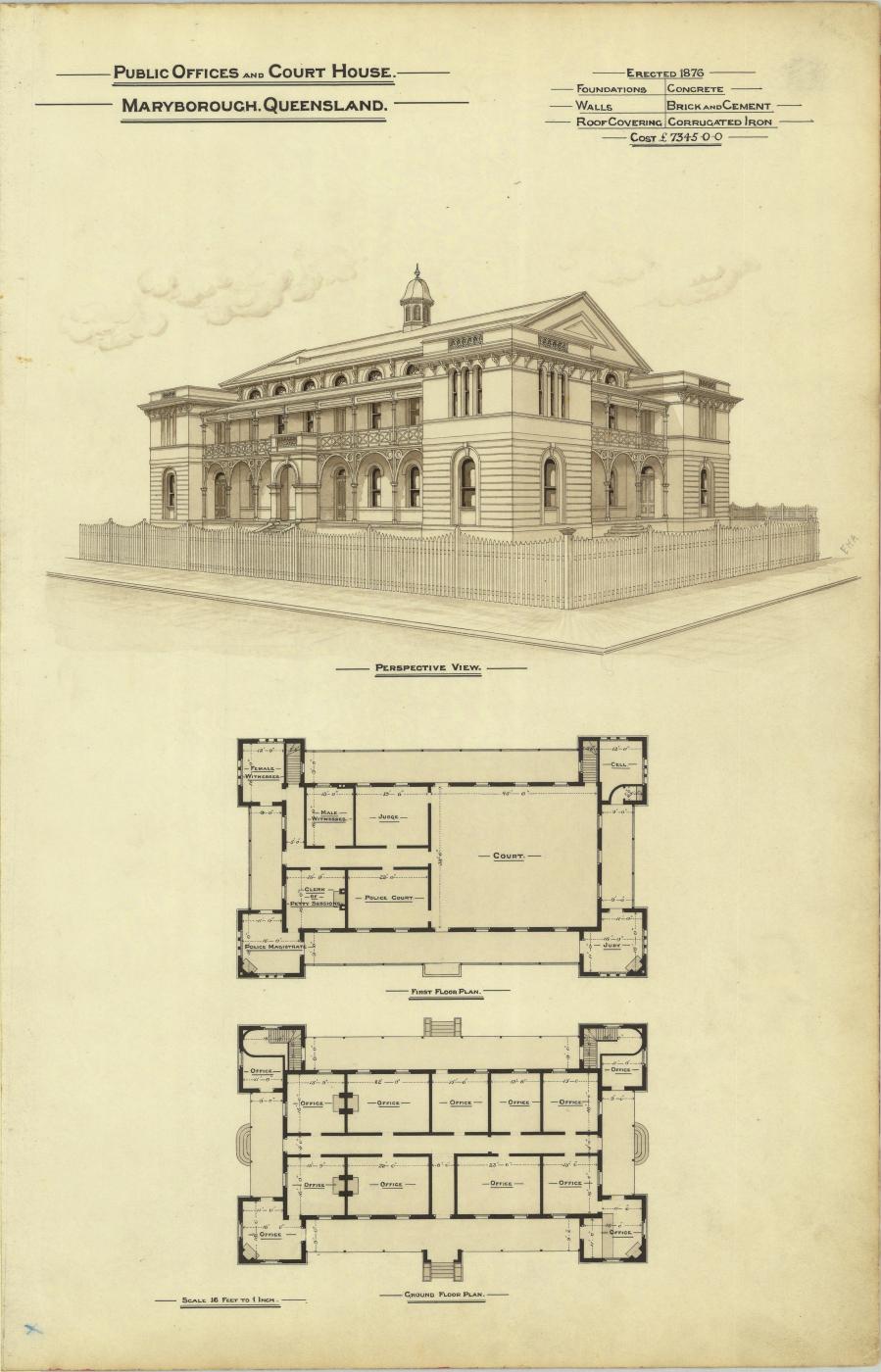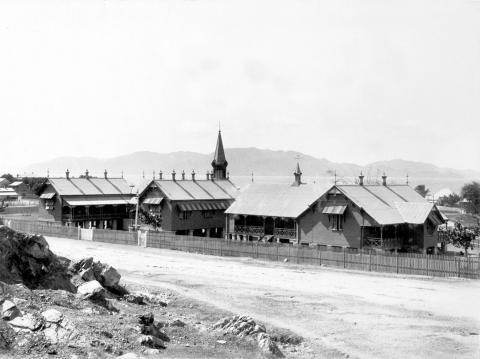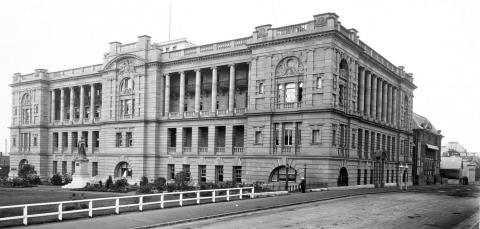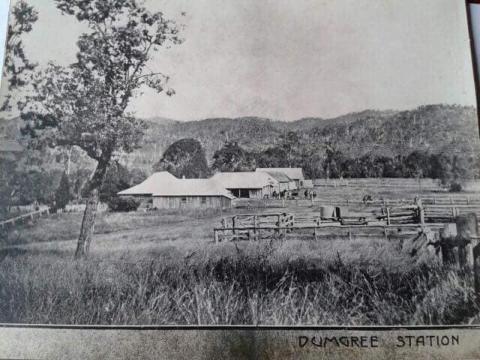
- News of the day
-
Queenslander, Wednesday 30 November 1938, page 31
Maryborough grew on the sheep's back, King Coal heralded industrial wealth
Described by the Prime Minister (Mr. J. A. Lyons) a few months ago as an object lesson in decentralisation, Maryborough, after shaking off the blows of circumstance which have felled many another town, lies snugly along the banks of the Mary, firmly entrenched as a city of the State.
The town has had a happier fate than that which befell the very charming lady whose name it commemorates - Lady Mary Fitzroy, who was dashed to death in Parramatta Park in 1849.
Ninety-six years ago, a party led by Andrew Pettie, and comprising Henry Stuart Russell, the Hon. W. Wrottesley William Joliffe and five convicts, the Mary River, and named it after the Governor's lady.
Their report on the fertility of the soil induced the Governor to send Mr. J. C. Burnett to explore the country, and the survey was completed in 1847, but before then squatters had taken their flocks to Maryborough, and as early as 1843 the "Edward," a ship of 87 tons, had brought stores to Eales' station, and landed them at Tinana Creek, a tribuatory of the Mary.
Maryborough grew, like the rest of the Australian continent, on the back of the sheep, but catarrh broke out in the flocks, and to save a little from the wreckage the squatters built a boiling-down works at Maryborough. That was the township's first reverse.
The next was when the immense stands of cedar were cut out, and the next when Kanaka labour was abolished and the great cane plantations vanished, leaving only smaller farms in the most valuable agricultural pockets, notably the Island Plantation, Magnolia, The Pocket.
Dairying and general farming took the place of sugar and of the dozen mills operating in the 80's, and today only one sugar factory is active.
In looking over Maryborough's early history, one finds the interesting fact that the present location of the city was fixed by the collapse of the very industry which opened the district.
That was the wool industry. In 1848 Mr. E. T. Aldridge, a man whose name will ever live in Maryborough's history by reason of his munificent gift to the Church of England of a belfry and a peal of bells, and a wing of the General Hospital, settled at what is now Baddow and which is usually referred to as the "old township."
The growth of the township made it necessary to come further down the river to deeper water, and Mr. Labatt surveyed a Government township at the junction of the Mary River and Tinana Creek in the 50's.
However, the squatters decided to erect the boiling-down works on the spot where the Gardens now stretch, and 1400 bales of wool were exported from the infant port, and the city "stayed put" at its present spot.
The year 1864 saw an event which had a profound influence on the history of the city. That was the establishment of Walkers Iron Foundaries and Engineering Works. These works, now Walkers Ltd., engineering works, range among the largest in the Commonwealth, and at different periods have had contracts totalling over £1,500,000 under way at the same time.
The opening of the railway to Gympie and its extension into the Burnetts dealt the carrying trade and shipping trade of the city heavy blows, but with the establishment of secondary industries that blow, like the others, was not a knockout, but merely a check to too fast a growth.
With the discovery of the Burrum coalfields and their opening up industrial life was given an enormous fillip, and today Maryborough ranks third in industrial importance in the State. Following on Walkers came a flour mill, a brewery, Hockley's Iron Works, butter and bacon factories, stove works, and a great increase in sawmilling activities.
Maryborough's decentralisation saved it from the worst of the depression years, and the big droughts, which have ravaged the countryside from time to time, have left the town secure, as the farm has carried the city and the city has carried the farm over many a dangerous crossing.
It is difficult to realise, that Maryborough is an industrial community of some 15,000 souls. Everywhere there are trees and shrubs, pleasant gardens, and gorgeous creepers with a background of miles of pasture land, of maize, and canefields.
But although justly named the garden city, it is primarily to the unexpected smokestacks of the city one must look for the reason for the people's fine homes, splendid shopping block, and the air of content and well-being that pervades Maryborough. Passing from Walkers Ltd., whose magnitude calls for a special review, the timber industry is the next greatest source of wealth, industrially.
Maryborough boasts of two saw mills, which are equal for size and efficiency of any in the Commonwealth. The mill of Wilson Harts has lately risen Phoenix-like from a fire which practically swept it from existence. Here are the latest machines which the brains of two hemispheres have evolved. There are giant appliances, all electrically driven, by which one or two men can handle immense pine logs from the dump down to the finished article. Giant bandsaws scream through the pine, while the pressure of a button, or the pull of a lever, adjusts the log so that the saws may cut the finest board or heaviest block.
Maryborough pine has earned a solid reputation in the south, and this firm, together with that of Hyne and Sons Pty., Ltd., a mill of equal size, and efficiency, sends away yearly millions of feet to southern markets.
Both mills also handle many million feet of hardwoods yearly. The district hardwoods are admitted by experts to be unequalled anywhere in Australia, even by the celebrated Western Australian jarrah. Each day great trains of logs pass through the Maryborough railway yards along special lines to each mill, while day and night giant motor waggons and trailers bring in their loads to the ravenous saws.
Eighty years of cutting without adequate reafforestation have left their mark on the district stands, and the mills have been forced to go further for their supplies, but today the Government is realising the need to safeguard the State's timber wealth, and in the last four or five years about 40,000 acres has been taken up for reafforestation, and in a few years another 50,000 acres will be handled. The forestry staff has been greatly augmented.
Fraser Island, the long neglected tourist paradise of the State, however, is not neglected from the timber aspect, and both mills draw appreciable supplies from the island. The Forestry Department has been busy here for years, and there are stands of pine growing towards maturity and some ready for the mill, as well as many large-scale nurseries. The stands of hardwood are in abundant supply, but the mills prefer mainland timber for most orders.
It is almost impossible to calculate the number of people who live directly and indirectly because of the timber mills. Wilson, Hart and Co. has 150 employees in the mill and many hundreds supply the mill from the field.
Hyne and Son, Pty., Ltd.. has a roll-call of 177 employees, and supplies from the hinterland are very many.
Hyne and Sons have a licenced cutting capacity of 69,000 super feet daily and have established retail branches at Rockhampton and Townsville.
The firm fills orders for pine in Sydney, Melbourne. Hobart, Adelaide, and Perth. Wilson Hart likewise have 8 heavy trade with the other States.
The port of Maryborough owes what of its former glory it retains largely to the timber trade, while the railway finds a bis proportion of its business with the mills.
Hyne's mill, as a result of intensive investigation and experiment, have largescale drying kilns, and are enabled to fill orders with timber guaranteed to contain a specified moisture content. The kiln was built to the plans of the Council of Scientific and Industrial Research, and Wilson Hart are also building kilns. Hardwood has become more and more popular in the district, and the use of pine is, consequently becoming restricted. The firm of Wilson Hart has demonstrated the beauty of hardwoods by the laying of a parquetry floor in the Legislative Assembly and the Maryborough Council Chambers, and has built its office of hardwood, showing the effect which can be gained with the various woods.
The efficiency of the mills was such that during the recent coal strike both were able to fill orders to date. The large drying kilns and the great stocks held enabled them to carry on without laying aside a single man, while road haulage enabled the mills to keep all stocks for eventualities at the level which years of experience had shown to be necessary.
Despite the fact that a fair amount of sawmilling work is carried out by the firm of Fairlie and Sons, Ltd., is best known as a joinery works. This firm does an extensive trade in dressed woods and all manner of joinery and fittings allied with the building trade.
Occupying some acres of space largely covered with a great two-storied iron building, the firm has been a great employer of labour and distributor of wealth to the city and district. Its ramifications extend far beyond the confines of Maryborough and hinterland, and although it experienced a "tight" period during the building slump which coincided with the era of depression, it must rank as a large and prosperous firm.
- Background
-
The Maryborough Court House was constructed in 1877 to the design of the then Colonial Architect, FDG Stanley for use as both a court house and government office block. The building is the second Maryborough Court House replacing an earlier 1860s building constructed on another site.
FDG Stanley, the Colonial Architect of Queensland was responsible for the design of the new building. Stanley arrived in Queensland in 1861 from Scotland where he trained. He was appointed to the Office of the Colonial Architect in 1863 as a clerk of works and in 1872 succeeded Charles Tiffin as the Colonial Architect. Prior to being asked to design the Maryborough Court House, Stanley was already experienced in the design of large public buildings, although this was early in his prolific career in Queensland.
Stanley conceived the Maryborough Court House as a double storeyed, arcaded pavilion with towers at each corner, sited between Queens Park and the adjacent street. The footprint of the building was set well back from Wharf Street providing space for a garden forecourt with Jacaranda trees enhancing the principal entrance.
The Maryborough Court House was constructed for about £7345 after Stanley's initial estimation of about £5500. Tenders were called on 20 October 1875 and on 19 November 1876 the lowest tender of local contractor, John Thomas Annear was accepted who undertook to complete the building within twelve months. The building was occupied, at least partially, by August 1877.
Courtesy of the Queensland Heritage Register



